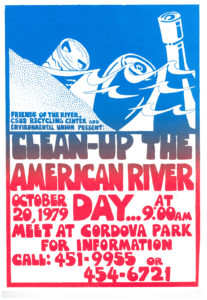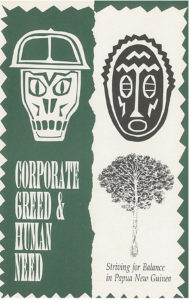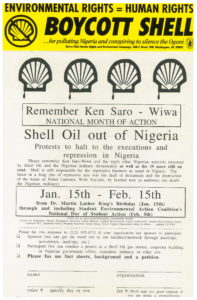Happy Birthday to the Sierra Club – turning 128 years old this month
And many more! Now one of the oldest and largest conservation organizations in the world, the Sierra Club was founded on May 28, 1892 in San Francisco by John Muir to promote conservation of the natural environment through public education, legislation and citizen action. Since then, the club has achieved a number of notable victories, including establishing and protecting national forests, parks and monuments; stopping dam construction in the Grand Canyon and Dinosaur National Park; fighting to keep the Antiquities Act intact; and campaigning for the passage of the Alaska National Interest Lands Conservation Act and the Wilderness Act.
Fortunately, the significance of this non-profit organization’s unparalleled history of conservation was recognized early on, even before the modern environmental movement truly took off. In 1958 The Bancroft Library became the official repository for the Sierra Club. The first series of records from the organization came through Bancroft’s doors in the 1970s. Over the decades the collection has grown with periodic installments as more recent records are added to the archives. The Sierra Club collection is a significant part of what has evolved into a major collecting theme within Bancroft’s curatorial umbrella of Western Americana: environmental movements of the 20th century.
Project wrap-up: NHPRC grant makes available newly-opened environmental collections and additions to ongoing collections
The Bancroft Library is pleased to report the completion of a two-year National Historical Publications and Records Commission (NHPRC) grant project resulting in the processing of 13 collections totaling 384.25 linear feet of records. These newly-accessible resources include the latest additions to four collections of Sierra Club records, along with nine other archival collections relating to environmental movements in the Western U.S.
The collections processed for the project — selected by Theresa Salazar, Bancroft’s Curator of Western Americana — were chosen because of high demand and their likely benefit to multiple areas of scholarship. Topics in these collections include a wide range of ecological issues related to protection and conservation of the environment via legislation and greater transparency and accountability in the wake of environmental damage. The research value of these collections is potentially wide and diverse, especially for scholars in fields such as history, environmental and forest science, natural and renewable resources, environmental and social justice, indigenous rights, human rights, animal rights and endangered species.
Archival processing of environmental collections
Processing archival collections entails intellectual and physical arrangement and description of the papers or records in a finding aid and catalog records published in library catalogs. When processing, archivists look for evidence of archival value in the materials to justify their continued preservation and storage. This is generally defined as the ongoing usefulness and significance of the materials in regards to the administrative, legal, fiscal, evidential or historical information they contain.
The processing of the Sierra Club records has proven to be especially complex. Because the organization’s records comprise a large and complex body of material, the Library determined early on that the material would be divided into more easily processed sub-collections, each of which would be further organized according to the conventional archival hierarchy of series and sub-series. These sub-collections include the general Sierra Club records, the Sierra Club San Francisco Bay Chapter and the Sierra Club California Legislative Office records, among many others.
Types of records found in the Sierra Club and other environmental collections at Bancroft may include correspondence and notes, grassroots organizing, outreach and educational campaigns, membership and promotional materials, program and subject files, reports and studies, lobbying letters, testimony, legislation and legal briefs, newsletters, clippings, maps, photographs and posters. Numerous Sierra Club oral histories, audio-visual materials and related pictorial collections can also be found at Bancroft.
Bancroft a leading repository for U.S. environmental documentation
Environmental collections are among the most frequently used materials at Bancroft. As is reflected in the material selected for the NHPRC grant, The Bancroft Library holds the records of many important environmental organizations and the papers of a range of influential environmental activists. Collections of other environmental organizations currently available for research at The Bancroft Library include the records of the Jenner Coastside Conservation Coalition, Save the Bay, Save-the-Redwoods League and Urban Habitat. Also available are the papers of environmental educators, leaders and activists such as David Brower, Newton B. Drury, Mark Evanoff, Aldo Leopold, Robert Marshall, Sylvia McLaughlin and Margaret Wentworth Owings. The Bancroft Library also holds pictorial collections pertaining to Ansel Adams and the Rainforest Action Network, and many collections of photographs showing degradation of the environment caused by deforestation and logging, wildfires, toxic substances and pollutants, floods, drought, and war.
Collection guides and further reading
Descriptions of The Bancroft Library’s archival collections can be accessed by searching Oskicat for catalog records and at the Online Archive of California for more in-depth finding aids. Selected digitized material from these collections is available via Calisphere and the UC Berkeley Digital Collection. In-person access to Bancroft’s collection material can be requested by the library’s online request service Aeon and by visiting the library’s Heller Reading Room during open hours.
Within many of the environmental movements there are overlapping figures and groups, such as Berkeley’s own David Brower who was the first Executive Director of the Sierra Club and co-founder of Friends of the Earth and Earth Island Institute. It is therefore advisable that researchers look for information pertaining to “related collections” and “materials cataloged separately” when consulting collection guides. Such notes are usually presented in the catalog record and among the introductory information of the finding aid for any given collection.
Finding aids for the environmental collections recently made accessible by the NHPRC grant project are linked here:
- Arizona Toxics Information records
- Earth Island Institute records
- Friends of the Earth records
- Friends of the River Foundation records
- Kenoli Oleari records of the Coalition for Alternatives to Pesticides
- Rainforest Action Network records
- Small Wilderness Area Preservation records
- Trustees for Conservation records
- Thomas J. Graff papers
- Sierra Club records
- Sierra Club California Legislative Office records
- Sierra Club Legal Defense Fund records
- Sierra Club San Francisco Bay Chapter records
Previous UC Berkeley Library Update posts from the past two years delve deeper into the histories, activities and records of some of the organizations whose collections were made accessible via the NHPRC grant project. In addition to the collection descriptions found in each collection’s finding aid, these Library Update articles offer helpful overviews and are illustrated with images of noteworthy collection material.
To learn more about Arizona Toxics Information and their fight to promote transparency and the right-to-know about pollutants and toxics along the Arizona-Mexico border, go here.
For an article on Earth Island Institute’s role as a Berkeley-based incubator network for conservation groups, including the Marine Mammal Institute, follow this link.
To find out more about the Friends of the River Foundation and their river protection campaigns, including their lengthy battle to halt construction of the New Melones Dam along the Stanislaus River, read this article.
A post about the Rainforest Action Network and their international campaigns to protect forests and promote environmental justice can be accessed here.
Information about the Sierra Club Legal Defense Fund (renamed Earthjustice in 1997) and why “the earth needs a good lawyer” can be found in this post.


